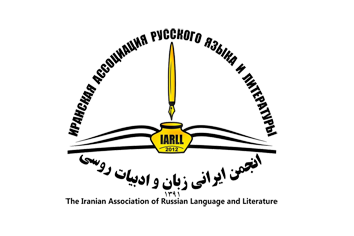MODERN SLANG AND TEACHING RUSSIAN TO IRANIAN STUDENTS
DOI:
https://doi.org/10.61186/iarll.23.2Keywords:
Language, Speech, Slang, Jargon, Communication, Colloquial Speech, VocabularyAbstract
The article examines the concept of “slang” and analyzes the features of youth slang in the Iranian and Russian languages. Slang is a youth jargon that forms a layer of colloquial vocabulary, reflecting a rudely familiar, sometimes humorous attitude towards the subject of speech, words that live a full life in the modern language, but are considered undesirable for use in a literary language. The concept of “slang” is increasingly gaining attention in modern philology. Currently, there are a large number of definitions that often contradict each other. The fact remains indisputable that in the modern Russian language slang is the most mobile layer of vocabulary, which is an accurate reflection of the linguistic picture of the world of representatives of a certain culture. Currently, languages are changing significantly right before our eyes. The relevance of the problem lies in the fact that youth slang is one of the components of the process of language development, its replenishment, and its diversity. Without knowing this layer of vocabulary, it is impossible to have a complete understanding of language as a developing phenomenon, which is necessary when teaching Russian to Iranian students. It is shown that slang is an integral part of many languages. It reflects the specificity of modern unique life.
Extended abstract:
This article aims to examine the concept of "slang" and analyze the features of youth slang in Iranian and Russian languages. Slang is a form of youth jargon that reflects crude or humorous attitudes through words that are considered undesirable for use in conventional settings. It forms a layer of colloquial vocabulary that lives a full life in modern language. Youth slang consists of words and phrases used by 11- to 25-year-olds, with a colloquial and sometimes rudely informal connotation. It is the most mobile layer of vocabulary in modern Russian and reflects the way people in a certain cultural segment see the world. The purpose of this work is to explore slang, demonstrate how it reflects social problems, and prove that "youth language" is driven by the social environment and cultural trends. The hypothesis is that the use of slang occurs more often among young people and directly depends on their environment. The research methods employed include literature review, analysis of sources, survey, and observation of students' speech. The novelty of this work lies in its potential usefulness in Russian language electives and classes related to the topic "Vocabulary in Common Use and Vocabulary of Limited Use." In conclusion, this article finds that slang plays a significant role in the Russian SOPHIA TOLSTAYA, helping it develop and making life easier for Russian-speaking people. However, it also highlights slang's demerits, such as "clogging" the language with non-normative lexical units, increasing the influence of foreign words, and leading to a degradation of communication to a "primitive" level. Nevertheless, slang also has merits such as expanding the lexical mix of the language, greater expressiveness and vividness of speech, and convenience and brevity of pronunciation. The concept of "slang" is gaining traction in modern philology, but its definitions often conflict. Nonetheless, Russian slang today is the most mobile layer of vocabulary that reflects social mindsets prevalent in various cultural segments. Exploring this layer of vocabulary is crucial to fully understanding language as a developing phenomenon, which is critical to effective teaching of Russian to Iranian students. Slang reflects unique aspects of life today and is integral to languages, contributing to their replenishment and diversity.
Downloads
Published
How to Cite
Issue
Section
License
Copyright (c) 2023 Issledovatel'skiy Zhurnal Russkogo Yazyka I Literatury

This work is licensed under a Creative Commons Attribution 4.0 International License.
![]()
"Creative Commons Attribution 4.0 International (CC-BY 4.0)"


